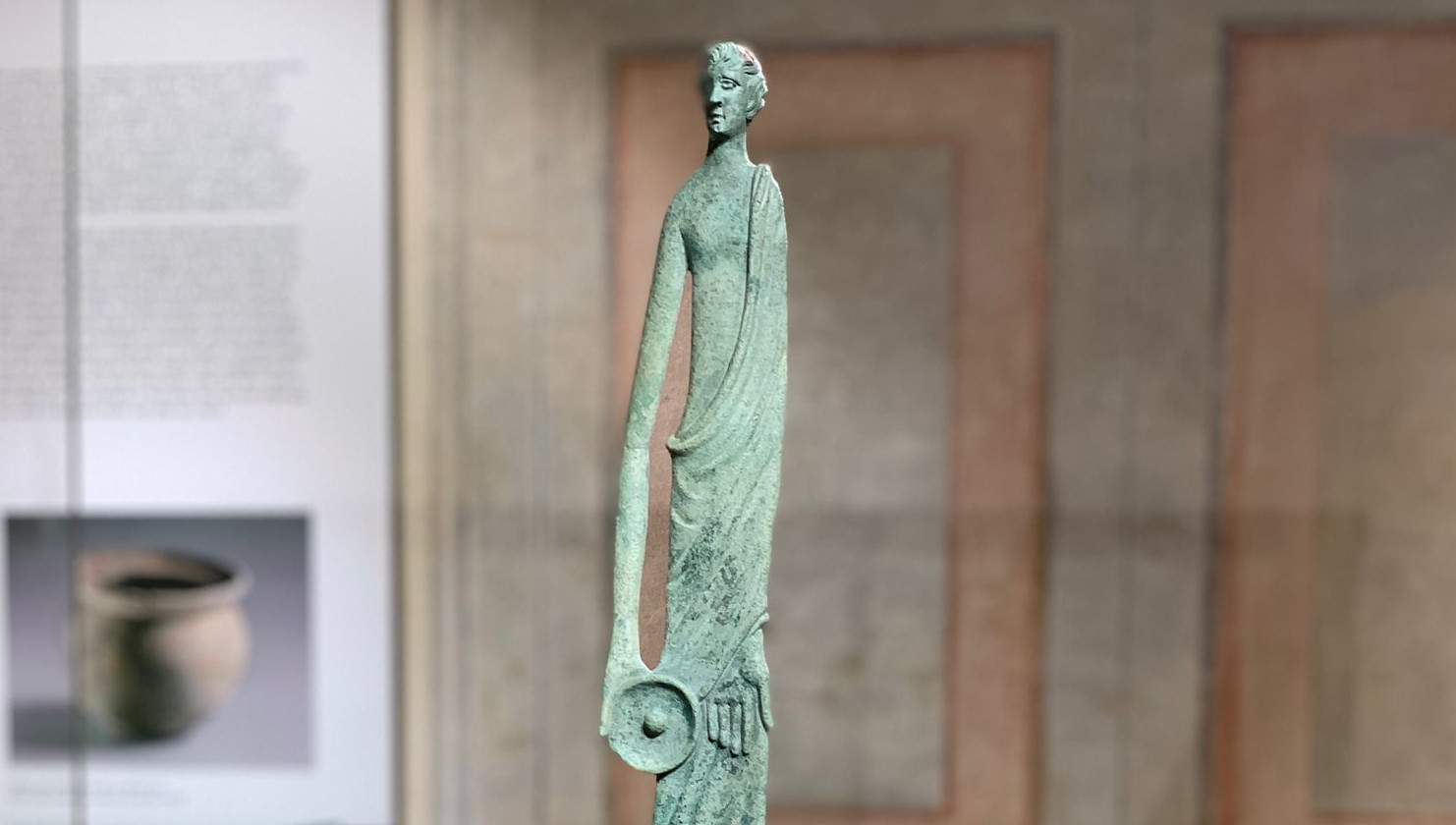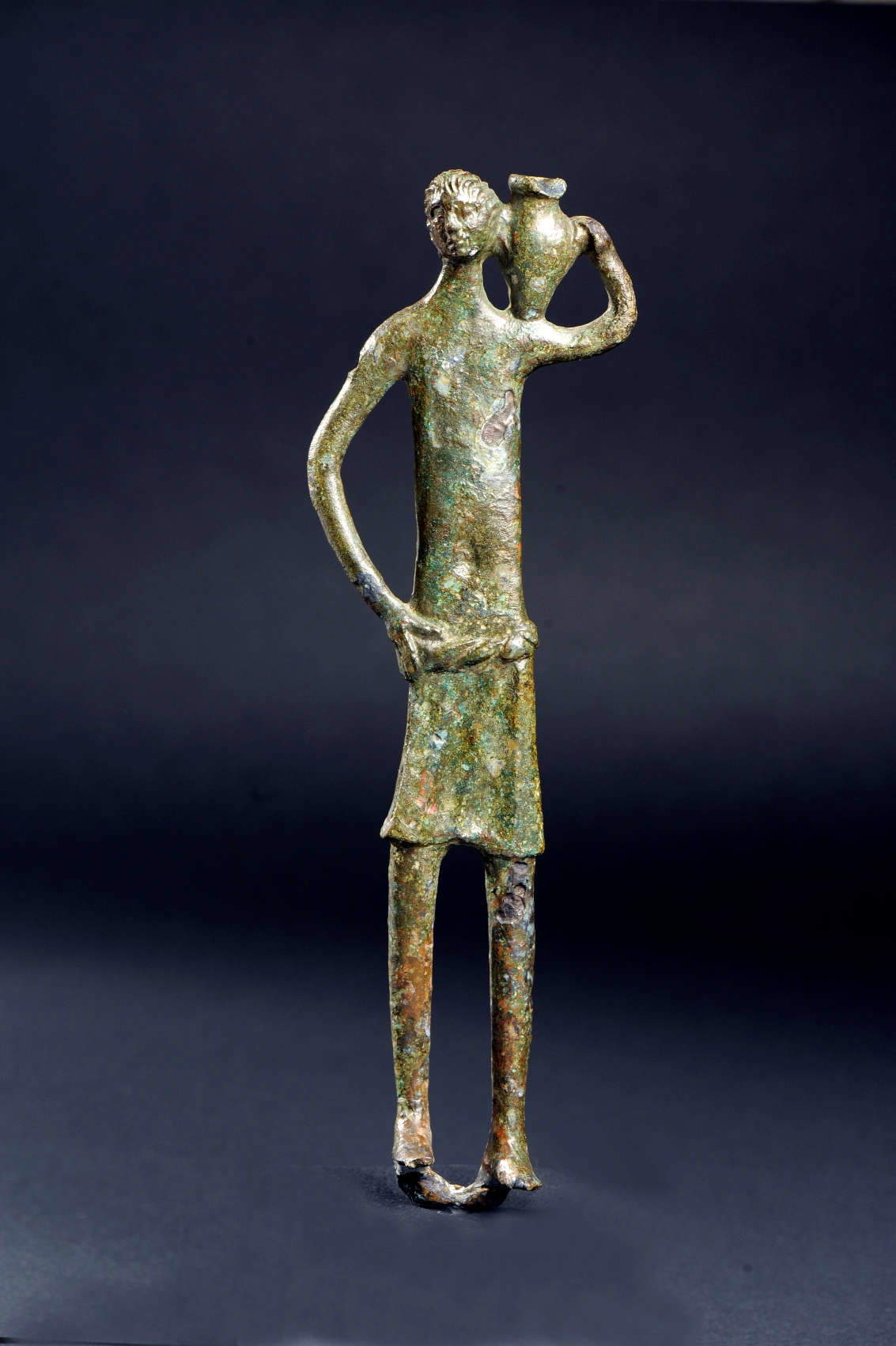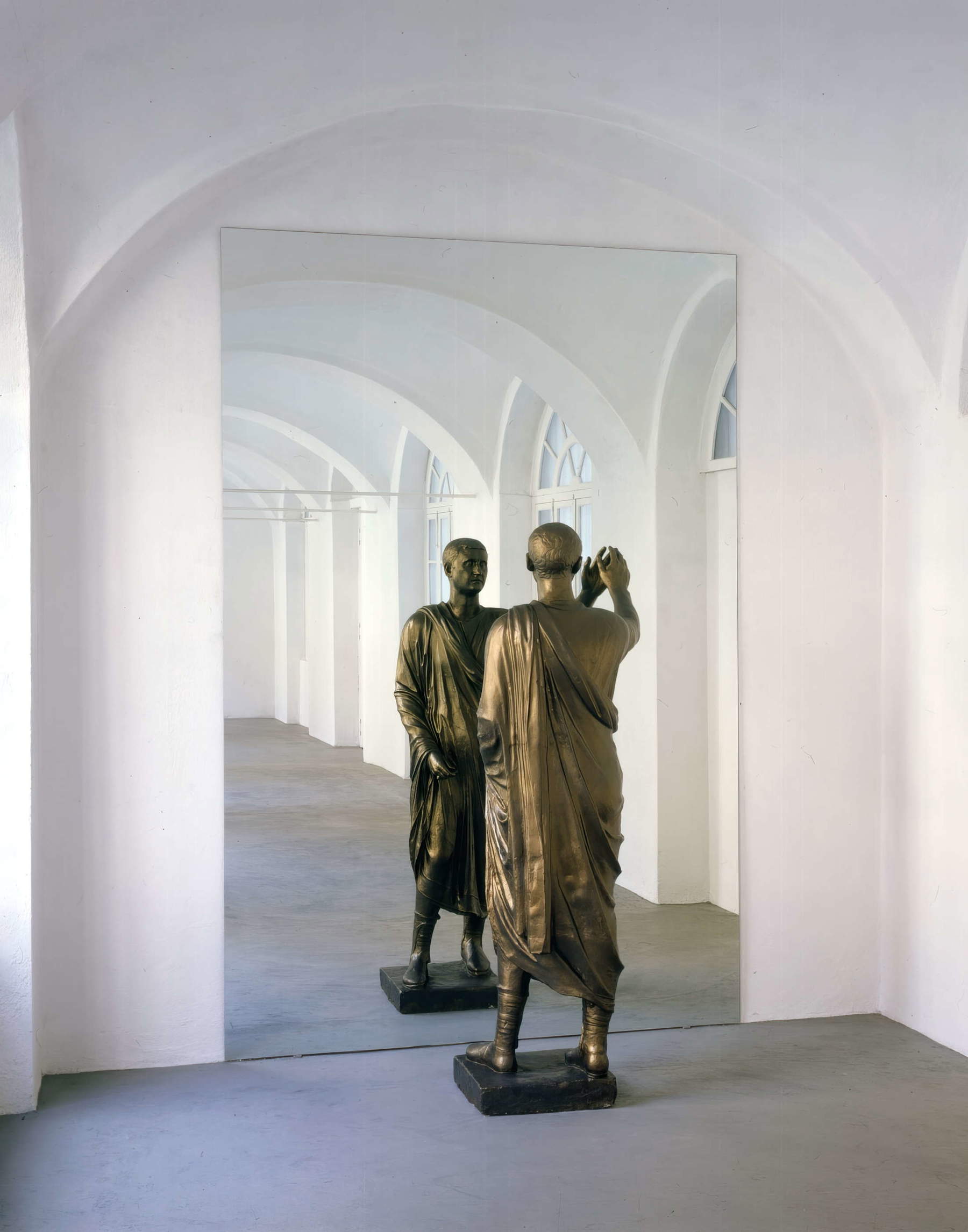In 1985 the Tuscany Region launched a cultural project destined to revolutionize the way ancient Etruscan civilization was told to the general public: the Etruscan Project. Between exhibitions, events, conferences and publications, that initiative marked a turning point in Italian museum communication, making archaeology accessible, modern and engaging. Forty years later, the exhibition Anima Etrusca / Etruscan Soul. The Fortunes of the Etruscan Project, hosted in San Gimignano at the Santa Chiara Museum Complex from July 4, 2025 to January 11, 2026, offers an in-depth rereading of that unique cultural season, among historical materials, artworks, documents and installations.
The Etruscan Project, promoted by the Region of Tuscany and organized by the Municipality of San Gimignano, Fondazione Musei Senesi, Civic Museums and Opera Laboratori, represented a breakthrough moment in the way archaeology and cultural communication were done. The initiative, inaugurated by President Sandro Pertini with the slogan “Buongiorno Etruschi!”, brought a fresh and pop image of the ancient civilization, spreading archaeological knowledge with a contemporary language that conquered Florence and the entire region.
The current exhibition, curated by Anna Mazzanti and Giulio Paolucci, with a section curated by Valerio Bartoloni, aims to reconstruct that innovative path. Through original materials, such as catalogs, photographs and promotional items, it documents the great communication campaign and the eight exhibitions spread throughout Tuscany, emphasizing the value of that season as a springboard for a new archaeological culture.

The exhibition layout is divided into several thematic sections. The first room introduces the cultural-historical context of the project, displaying iconic promotional materials such as Fernando Farulli’s guiding image, inspired by an Etruscan bronze statuette, and merchandising objects that for the first time brought the public closer to archaeology in a popular and contemporary way.
The second room is devoted to the displays that made the exhibitions immersive and innovative experiences in 1985. Architects such as Adolfo Natalini and David Palterer revolutionized the display of artifacts with cutting-edge scenic solutions, documented today by drawings, archival photographs, and floor plans. Also on display is a fine collection of Richard-Ginori ceramics, inspired by Etruscan bronzes, evidence of the dialogue between antiquity and design.
A central core of the exhibition concerns the relationship between Etruscan and contemporary art. Works by artists who participated in the original project are presented, such as Michelangelo Pistoletto with his sculpture L’Etrusco, Fausto Melotti and Arnaldo Pomodoro, whose works dialogue with archaeological finds from Villa Giulia. Also documented is Mario Schifano’s performance Amare Chimere, a 1985 highlight event held in Florence’s Piazza della Santissima Annunziata, documented thanks to photographs by Marcello Gianvenuti and unpublished video by Giacomo Verde. This section also pays tribute to Omar Calabrese, a semiologist who created the “Etruscan Imaginary” section of the original exhibition, investigating the marriage of high art and pop culture, now evoked through shots and set-up documents.
The exhibition also preserves a small treasure chest of design and fashion artifacts. Granulated gold jewelry by Unoaerre and pieces from Alunno-Stendardi ’s Etruscan line reinterpret the motifs of Etruscan goldsmithing with modernity. Terracotta perfume bottles and a postmodern dress by Cinzia Ruggeri, inspired by the Etruscan world and used for the cover of the musical hit “Aristocratica” by Matia Bazar, testify to the influence of Etruscan culture in the 1980s.
These objects, together with Maddalena Sisto’s exquisite drawings, tell of a time when archaeology left museums and entered the everyday, influencing aesthetics and consumption.


The 1985 project achieved an unprecedented media resonance: the exhibitions and events appeared in the pages of major magazines such as Domus, Casa Vogue, FMR, Archeo, and Panorama, with a special focus on the journal Archeologia Viva. The current exhibition also documents this aspect with editorial materials, newspapers of the time such as La Nazione, and videos produced by RAI and Istituto LUCE.
A focus is devoted to the birth of the Etruscan museum network in Tuscany, a cultural system that still represents Italian excellence, a symbol of territorial enhancement and dialogue between archaeology, art and community. Two sections of the exhibition also take a further leap into the past, exploring roots and anticipations of the Etruscan Project. The first investigates the link between Gabriele d’Annunzio and Etruscan antiquity, focusing on the inspiration the writer drew from the landscape and the cities of Volterra and San Gimignano while writing Forse che sì, forse che no. The second evokes the 1926 National Etruscan Conference, held in Florence and partly between Volterra and San Gimignano, a milestone in the twentieth-century rediscovery of Etruscan civilization. This event was a key moment that prepared and anticipated the groundbreaking breakthrough of 1985, now read and celebrated in 2025. Finally, the young artist Gabriele Ermini, class of 1996, with his work Untitled (La corsa sul crinale), included in the VIS-À-VIS visual arts project and created for the occasion, adds a new contemporary perspective to this narrative, confirming the timeless vitality and inspiration of the ancient Etruscan civilization.
In short,Anima Etrusca / Etruscan Soul aims to be a journey that interweaves archaeology, contemporary art, design and communication to narrate the extraordinary fortune and actuality of the Etruscans. Through the critical reinterpretation of the 1985 “Etruscan Project,” the exhibition in San Gimignano builds a bridge that unites past and present, powerfully projecting into the future.
 |
| Anima Etrusca: exhibition celebrating 40 years of the Etruscan Project in San Gimignano |
Warning: the translation into English of the original Italian article was created using automatic tools. We undertake to review all articles, but we do not guarantee the total absence of inaccuracies in the translation due to the program. You can find the original by clicking on the ITA button. If you find any mistake,please contact us.